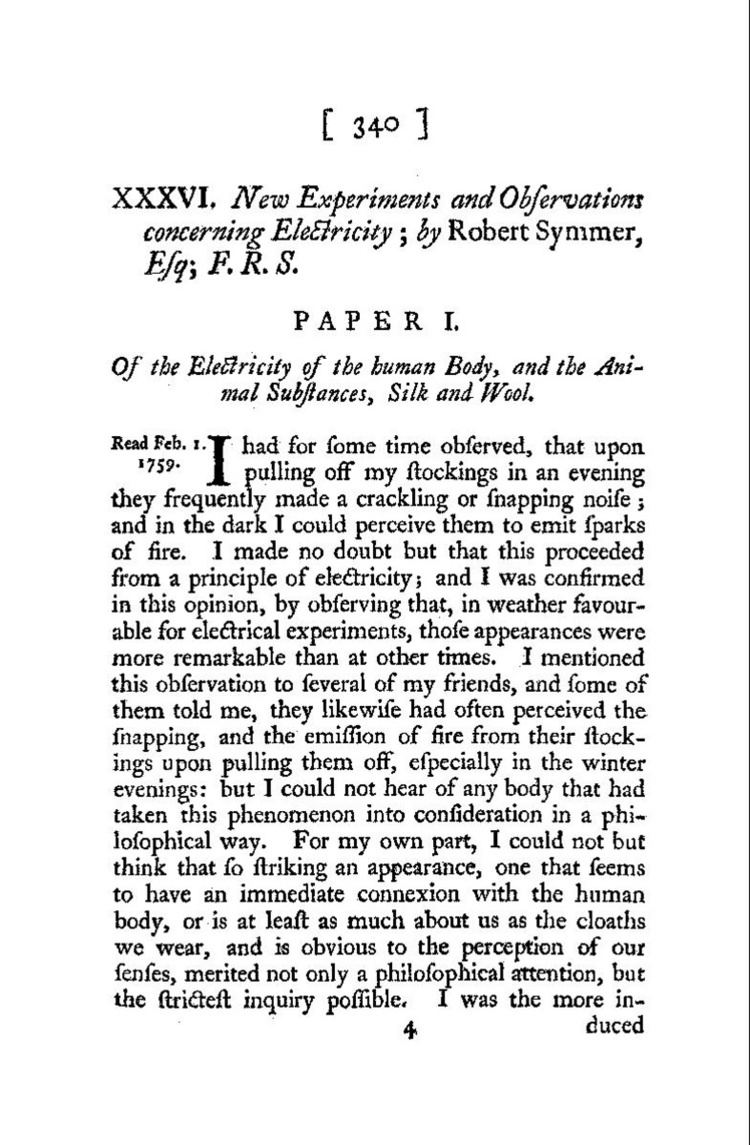 | ||
Robert Symmer, FRS (1707–1763) was a Scottish philosopher and physicist, known principally for the now defunct fluid theory of electricity.
Contents
Biography
Symmer was born in Galloway, Scotland and educated at the University of Edinburgh, matriculating in 1719 but not graduating until 1735.
He published a four-part treatise in the Philosophical Transactions of the Royal Society titled "New Experiments and Observations concerning Electricity". His paper suggested that electricity was not a single force, as was believed by, for example Benjamin Franklin and Giambatista Beccaria, but was instead two opposing forces arising from two separate liquids.
He reported his observations on the static electricity resulting from repeatedly removing his woollen and silk stockings, a habit which led to him being nicknamed "The Barefoot Philosopher".
Although his theory was paid little attention in Britain, his views received more notice abroad. Scholars such as Jean-Antoine Nollet, Franz Aepinus, Johan Wilcke, Brugmans Anton or Torbern Bergman were supporters of the his 'two-fluid' theory, considering him its originator. However, this idea was a revival of that of Charles du Fay, who in 1733 considered that electricity consisted of 'glass electricity' (électricité vitreuse) and 'resin electricity' (électricité résineuse).
Modern historians of science are not a little kinder to his views as the country people of his time. The reasons are obvious, since most reports of electricity in the 18th Century by Joseph Priestley's The History and Present State of Electricity (1767) were derived, although the treated fairly dualistic position, on the other hand, no opportunity to mock Symmers omitted. However, wearing particular Mathurin Jacques Brisson, by his inaccurate French translation of Priestley in "History" and contained the discrepancy between the mocking treatment Symmers in the English original and its milder presentation in French Histoire de l'Electricité to observe the theory Symmers. The historian of science I. Bernard Cohen, one of the most respected contemporary connoisseurs Franklin said, later in his book, Franklin and Newton: An Inquiry into Speculative Newtonian Experimental Science and Franklin's Work in Electricity as an Example thereof (1956) lack of understanding about the fact that Symmers restoration experiments in general acclaim.
He was elected a Fellow of the Royal Society in 1753.
He was appointed head clerk of the office of the Treasurer of the Chamber, dealing with the accounts of the King’s Household.
